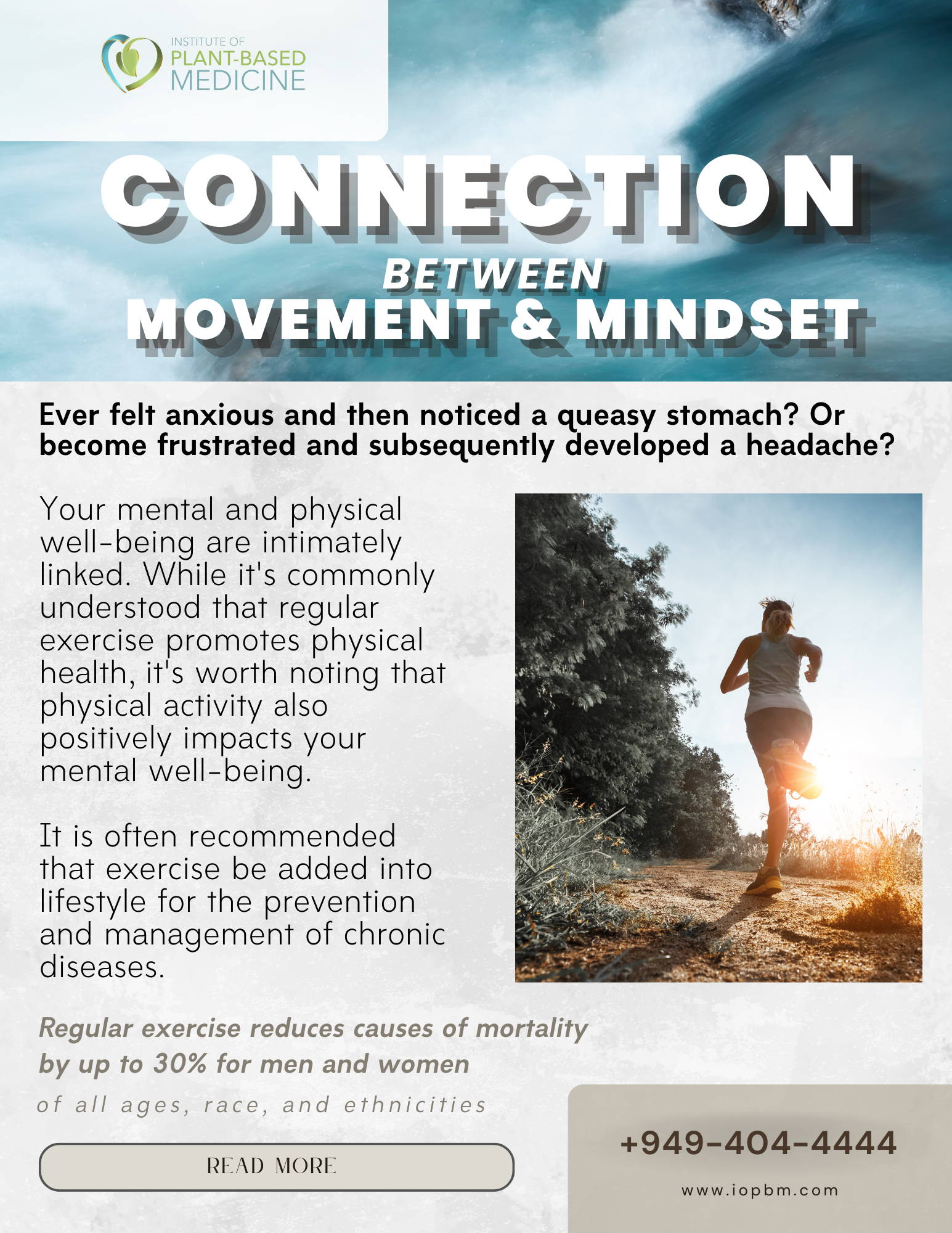No Products in the Cart

Several epidemiological studies show that individuals who exercise regularly experience fewer anxiety and depressive symptoms and provide protection against the development of mental disorders, such as Alzheimer’s Dementia.
Aerobic exercise, such as cycling, running, and swimming can reduce our brain’s “fight or flight” reaction and lessen anxious feelings. As a number of studies have pointed to, aerobic exercise exposes individuals to similar physical symptoms that they may experience when feeling anxious, such as a rapid heart rate. Experiencing these sensations during exercise increases the body’s tolerance toward them and the brain’s ability to recognize that while these sensations are uncomfortable, they do not pose a threat, therefore allowing the body to regulate itself. Qigong, tai chi, and yoga are all helpful in alleviating depressive symptoms. This may be because these types of mindful movements allow individuals to focus on bodily sensations such as breathing.

Some individuals may be equipped with thought control strategies such as looking at the situation they are in from a different angle, however when you are not capable of employing those skills, movement can facilitate that shift in mindset. Movement provides a distraction from one’s current state of mind and provides space between ourselves and our thoughts and feelings.
The act of moving should be whatever you love doing. Exercise is not one-size-fits-all so if you love to dance, dance! It does not have to be an intensive, lengthy workout to count as movement. Even five minutes can help shift your mindset and provide mood-boosting benefits. Let’s get moving!
Reflecting on our recent exploration of the connection between movement and mindset, we recognize that taking the first step towards mental and physical well-being can sometimes be a daunting endeavor. If you're seeking additional guidance, Dr. Goodman can offer invaluable insights. With expertise that extends from anxiety disorders to GI Disorders, hypertension, and diabetes, Dr. Goodman teaches specific, easy-to-follow techniques in mindfulness, self-compassion, and sleep management. These methods aim to regulate your nervous system and achieve greater stability across both mental and physical health dimensions.
References:
1. Harvard Health Blog. (2016, March 28). How simply moving benefits your mental health. https://www.health.harvard.edu/blog/how-simply-moving-benefits-your-mental-health-201603289350
2. Anderson, E., & Shivakumar, G. (2013). Effects of Exercise and Physical Activity on Anxiety. Frontiers in Psychiatry, 4, 27. https://doi.org/10.3389/fpsyt.2013.00027
3. ERS Texas. (2021). A Movement Mindset: Taking Strides Toward Better Health. ERS Texas. https://ers.texas.gov/news/a-movement-mindset-taking-strides-toward-better-health